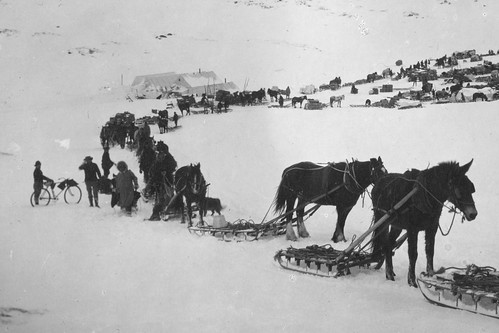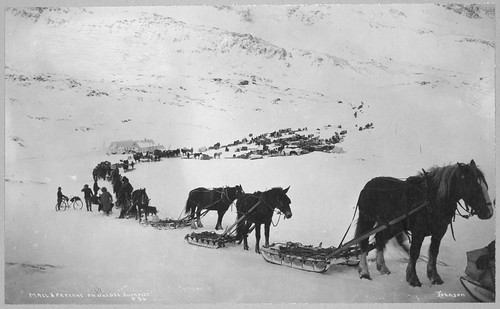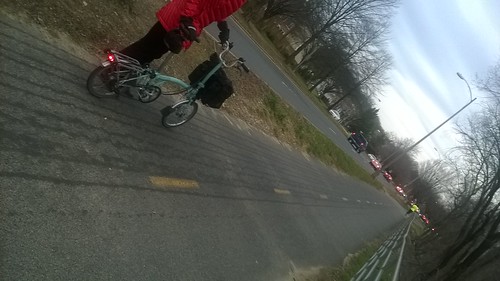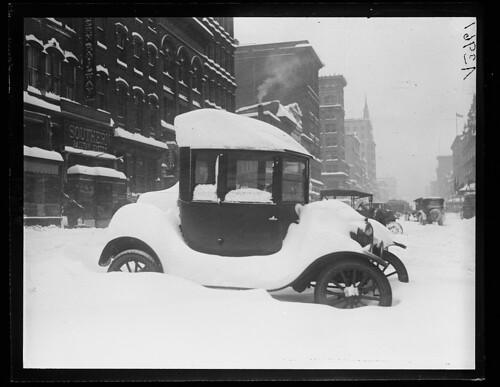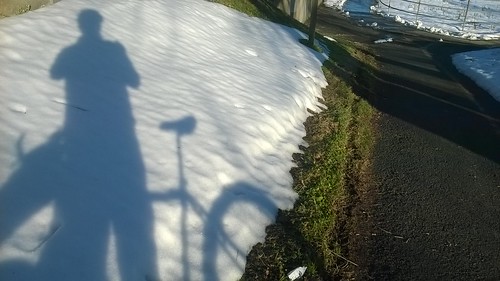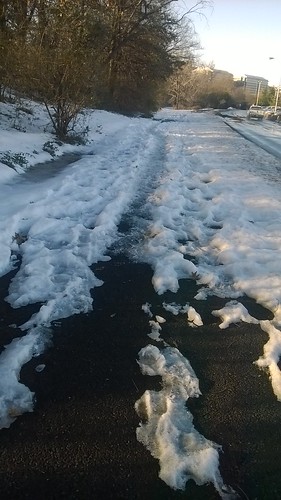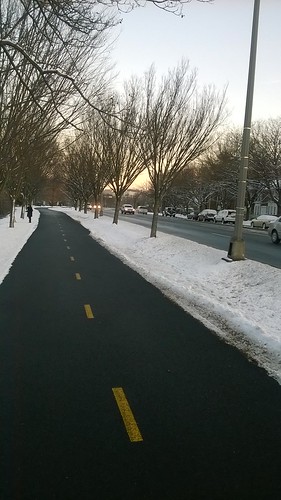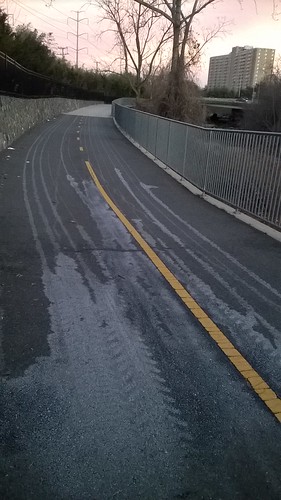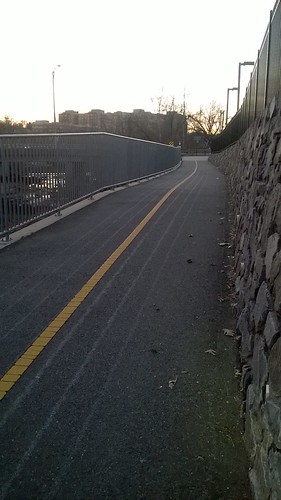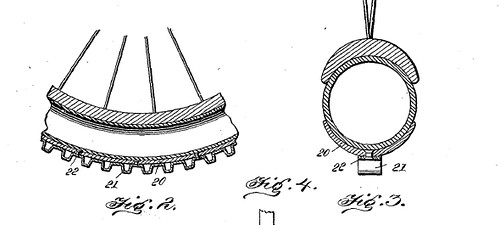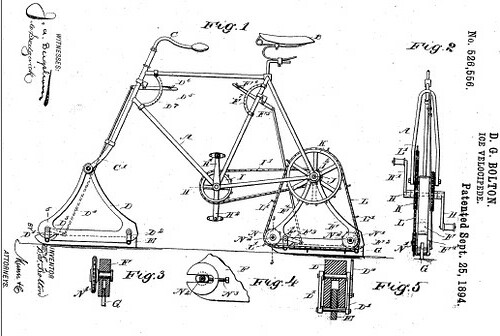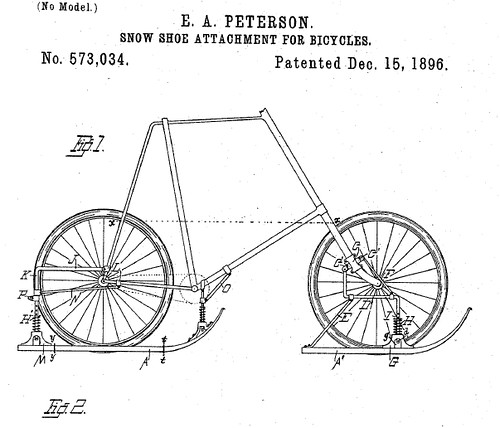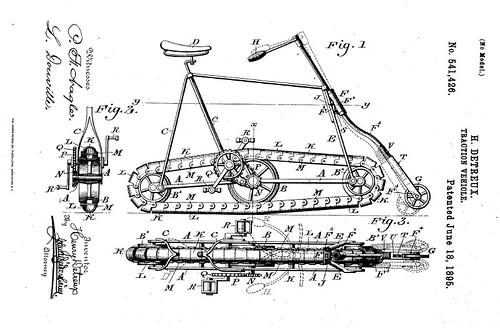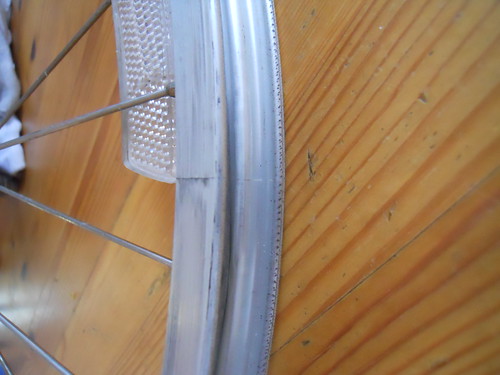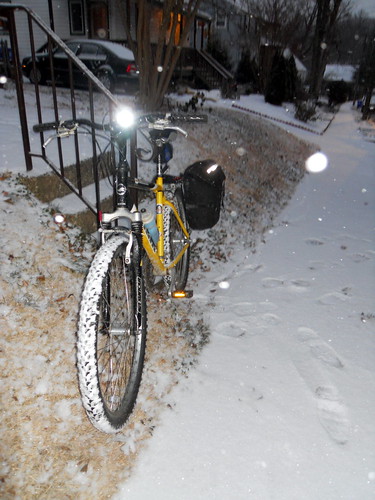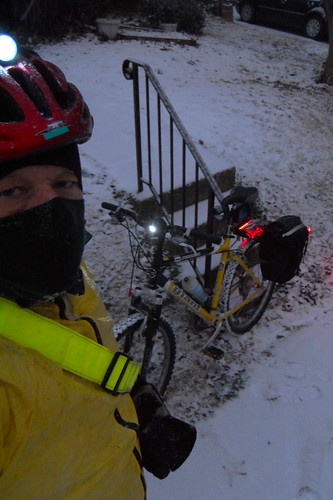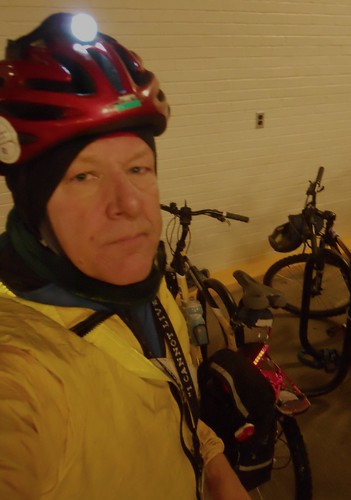As in, my limits. Well, my limits and the limits of my cycling equipment.
My ice commuter, for better or worse
Today was the second day I rode back and forth the ten miles between my house and Capitol Hill with the trails pretty icy and in reasonably cold weather, particularly in the morning. In my years of commuting in more or less all weather, it is fairly unusual to have sustained cold such that the trail conditions didn't change that much between two days. In a few places some salt had cleared areas, but it was not like the second day was a huge improvement. (Mostly the trails are not treated.)
This morning it was cold, for here at least, at around 12-14 F - around -10 C. It was colder than yesterday and since it took me over an hour to get to work, my fingers were starting to get cold on one hand - but overall my cold weather biking clothes work OK at least down to this temp. But I need to keep moving, spinning, to maintain my warmth.
The bigger problem is with my bike and my fitness (my "fitness" in the broader sense of being physically ready for such an endeavor). The bike is an old Giant that I have only ridden in the last few years when I want to take advantage of the studded tires I have mounted on it, and that's it. The bike could use some adjustments. The rear brakes in particular don't work well in these conditions and of course when it is slick the front brake can't be used (much) without instantly causing a crash so the poor rear brake performance isn't helpful at all. (I should fix that!) The 1.95 inch wide tires with the studs are lovely for traction when the surface is mostly flat/smooth but if there is accumulated snow or snow+ice they have a terrific amount of road (or I guess snow) resistance - the width isn't helpful.
But it does work. Two days running I rode back and forth on a lot of slick surfaces and didn't fall once. And I got back and forth.
The Gravelly Point area of the Mount Vernon Trail; another riding north as I head south
I don't see too many other riders on the trail on a day like this. Today I saw two riders coming the other way on my ride home (total) - one was a commuter and the other fellow just seemed to be out enjoying the fun to be had. The photo above shows the commuter I saw, chugging along. He did not, I think, have studded tires - he was riding a cyclocross sort of 700 size tire bike and was hugging the right edge of the trail. I am familiar with this approach - basically you stay away from where other riders have been riding and especially stay away from icy sections. The narrow tires cut through the snow OK and you have traction but it very tiring to maintain this kind of straight-ish line.
My approach with the wide mountain bike tires is to stick to the middle where the snow is pounded flat and where there is compacted snow on ice and try to skirt as much of the clear ice as I can. The studded tires will allow some riding on clear ice, but you can't brake or steer (much). And sometimes you hit a bump and the bike simple slides. The studs aren't a perfect solution.
It's an adventure (or something like one, for me) but I'm glad to have the weekend now to rest up. I don't know if I could do more than two days running of this. I was unhappy this morning to pass a guy walking his bike on the Mount Vernon Trail near the airport, on one of the bridges - he had a very nice bike, but apparently was having no luck staying upright. He didn't look like he was dressed as warmly as me, and walking . . . I didn't have anything to help him with this problem, so I just kept going.
A snow-bike patent for a set of attachments from 1900 - but my problem was ice, alas
I have a sort of cyclocross bike that is presently out of commission with disk brakes - I should get some studded tires for that thing when they are on sale so I have a bike to ride in this kind of weather with working brakes and have narrower tires to cut through snow. For next year. Yeah.
